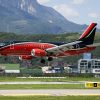 In the last 10 years, the world faced two viruses with great amount of deaths, panic of consumers and impact on airline businesses and global economy. In 2009, 575 000 people died from swine flu pandemic, and from 2019 until now, 330 000 people died from COVID-19 (full table of all significant viruses provided below). At the beginning of 2020, some airlines announced dividends to shareholders from last year’s profit and asked for states aids several weeks after, due to airlines’ immediate deadlock. It is obvious that there is a frequency in pandemics with the history of 50 years, and the impact on airline businesses is already anticipated. It is important to note that inaccurate provision accounting could result in significant losses for both investors and air passengers, nevertheless cause a significant financial problems for the company.
In the last 10 years, the world faced two viruses with great amount of deaths, panic of consumers and impact on airline businesses and global economy. In 2009, 575 000 people died from swine flu pandemic, and from 2019 until now, 330 000 people died from COVID-19 (full table of all significant viruses provided below). At the beginning of 2020, some airlines announced dividends to shareholders from last year’s profit and asked for states aids several weeks after, due to airlines’ immediate deadlock. It is obvious that there is a frequency in pandemics with the history of 50 years, and the impact on airline businesses is already anticipated. It is important to note that inaccurate provision accounting could result in significant losses for both investors and air passengers, nevertheless cause a significant financial problems for the company.
Global uncertainty, caused by COVID-19, has brought a significant impact on the economic system as well as on the ability to quickly and effectively respond to the pandemic. According to the recent study published in VOX, a weighty global output contraction will be caused by COVID-19 and more than half of it will be for the reason of economic uncertainty, which is so substantial that its costs are proportionate to the costs created by the pandemic itself.
COVID-19 outbreak lead to a halt, not only for the people of the world, but also for the economy heavily affecting the whole business environment that is now experiencing major challenges and the future does not seem bright. The expectations are for the global economy to face the recession that is considered the worst since the Great Depression, according to the International Monetary Fund. However, World Trade Organisation is even further from the positive side forecasting almost 9 per cent negative growth for 2020. The affects also reached the global foreign direct investment (FDI) with the capital from emerging economies flowing out unpredictably. The downward pressure of between -30 and -40 per cent in 2020-2021 is predicted for FDI.
There has been a number of epidemics in the past years, including SARS in 2003, H1N1 in 2009, Ebola in 2014 and MERS in 2012, that, also known as MERS-CoV, being similar to COVID-19. While the methods used, such as lockdown, make a positive influence the spread of the virus and prevent the transmission, there is also a negative side, in which social and economic life of individuals and communities are brought to a standstill impacting their health and wellbeing from other perspectives. All of this causes anxiety and questioning whether there was a strategy for COVID-19 after facing a variety of other viruses, and how is the next contagion going to be dealt with. Bill Gates talked about exactly that in his TED Talk in 2015 stressing that the world is not ready for the next outbreak; in 2017, World Health Organisation (WHO) also released its recommendations regarding this matter, however at that point, the attention and consideration were little.
The scale of COVID-19 contagion will undoubtedly change the situation and anything similar occurring in the future should have better ways to be controlled yet actions businesses for that to happen are required.
Aviation industry, along with other transportation sectors, takes a very important part in limiting the spread of infectious diseases, so the practises learned in the recent outbreak should certainly be integrated into the future planning and operations. On March 5, 2020, the International Air Transport Association (IATA), a trade group, projected a possible hit to worldwide revenues of up to $113bn this year. There is no excuse for the industry of such extent not to be ready for shocks and unprecedented events – airlines and airline-supporting businesses must be prepared to respond to them prioritising the support for employees and customers. Airports also play an important role in the industry’s economy, therefore their infrastructure and resilience must be well supported. A variety of processes, including workforce preparations, training, operation reviews etc., must be undertaken in order to ensure the strength when emergency strikes.
In order to guarantee stability and be fully prepared, all airlines and airline-supporting businesses must evaluate the provision amounts and reserve them for possible unpredicted events referring to the International Accounting Standard 37: Provisions, Contingent Liabilities and Contingent Assets (IAS 37). The amount of the provision must be of the size required to settle the present obligation of the entity arising from past events. The funds to cover the expenditure for the future events are generated by the appointed sums set to reserve on a regular basis considering the projected frequency of the possible events, may it be outbreaks, repairs, debts, etc.
Taking the last decade, details of the properties of coronavirus were first announced in 1968; although the most compelling ones do not recur very often, the average numbers show that detrimental ones do so approximately every 5-7 years. After this last, COVID-19, event is over, the damage to companies will be known, and it will be clear what exactly needs to be settled. Therefore, if coronavirus has a tendency to recur every 5-7 years, the loss amount shall be divided into parts for this period of time, and set aside every year, which would ensure the preparation for the next cycle and act immediately without waiting for decisions from governments to be made. However, the subsequent measurement must be calculated and divided carefully – it should not be based only on the losses, caused by COVID-19.
When the reserve for possible losses are formed, company’s annual profit is reduced, thus shareholders are not able to pay off more dividends yet when confronted with the crisis, the company has funds to help it overcome the suspension of operation. To substantiate the funds, which are kept in the reserve, the company must refer to the requirements of IAS 37.
Such method, supported by IAS 37, is highly beneficial as it allows the airlines and airline-supporting businesses to avoid sudden fallouts, vast losses that are often lead to bankruptcies and extents, where third parties are often involved and victimized.





